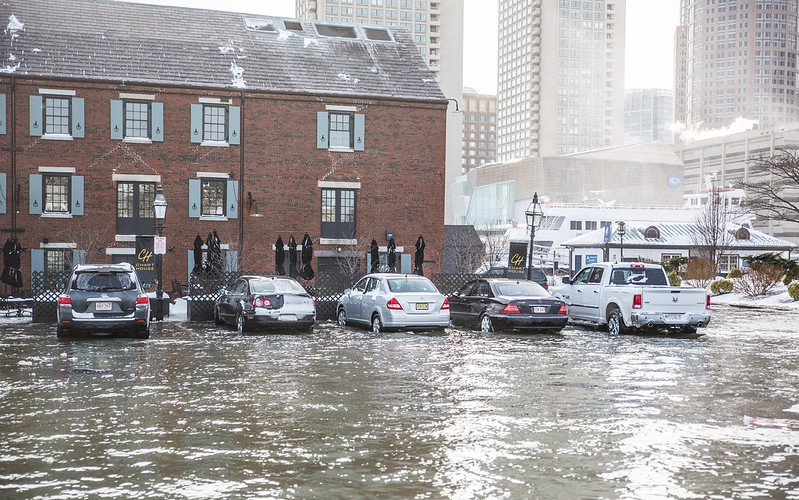
Massachusetts cities and towns are exposed to more flood risks with predictions of more hurricane activity. Building codes need to keep up.
We’re only a few weeks into the 2024 hurricane season, but forecasters have already issued an ominous warning. According to the Climate Prediction Center at the National Oceanic and Atmospheric Administration, there is an 85% chance of above-normal hurricane activity. Forecasters expect as many as 25 named storms this year, of which as many as seven may become major hurricanes. How certain are meteorologists of these predictions? More certain than not.
So, as we hunker down for what could be a whopper of a hurricane season, it’s never been more important to get our house in order. Or, rather, houses. The odds are high that Massachusetts will again be battered by the types of intense storms like the one that dumped 11 inches of rain on Leominster last year. If it doesn’t happen this year, climate change increases the chances it will happen the next.
When it does, will Massachusetts be ready?
Building Codes Are a Resilience Tool
Preparing for the turbo-charged storms that climate change is bringing us means paying close attention to where and how we build. That’s why state building codes exist, to set a minimum safety standard for all residential and commercial buildings. And in today’s world, a structure’s ability to withstand extreme weather should be part of the equation.
The problem is that it isn’t. Massachusetts building codes were established decades ago, long before extreme weather patterns, paired with higher tides, became the norm.
The result? Massachusetts buildings remain vulnerable to whatever the next storm may bring. We’ve seen it happen again and again, including earlier this year when flood waters inundated homes and businesses in Boston’s Fort Point, Long Wharf, and Seaport Districts.
That’s why CLF has been pushing the Massachusetts Board of Building Regulation and Standards (BBRS) to strengthen Commonwealth building codes. With the Climate Safe Buildings Act before the Massachusetts Legislature, we have the opportunity to pass intelligent, up-to-date laws that will make our cities and towns more resilient to the climate change impacts we are already experiencing.
Elevation Requirements Are Just a Beginning
In May, the Board of Building Regulation and Standards voted to approve one important change. (It’s still awaiting final approval by the state.) Since 2021, CLF has been pushing the Board to raise the minimum elevation requirement for buildings in flood-prone areas to keep occupants out of harm’s way. Fortunately, the agency has finally recognized the wisdom of our request and adopted a higher “freeboard” requirement, which is the additional height added to buildings to keep them above floodwaters.
Adopting this measure was smart for two reasons: Not only does it help homeowners and businesses avoid flood damage, but it can also help keep flood insurance premiums in check. Many cities around the country have already made this move, like Houston, following the deluge brought on by Hurricane Harvey. And some Massachusetts towns and cities have also sought to incentivize developers to build to a higher elevation. Now, thanks to this change, cities and towns statewide will have climate-safe elevation standards that give homes and businesses added protection against floods.
Next Steps: A Better Variance Process and Flood-Safe Construction
As we face more extreme weather, we must take other critical steps to make our infrastructure more resilient. These steps are part of a bill, H.3028, that is before the Legislature right now.
First, we must create a stronger variance process. Right now, Massachusetts has no set system for deciding whether to grant a builder a variance to construct in flood areas. The state currently reviews and approves variances on a case-by-case basis. But in the age of climate change, case-by-case no longer works. We need a more concrete variance policy that will ensure that builders adhere to safety guidelines in flood-prone areas.
Second, the state must allow cities and towns to mandate flood-safe construction in current and future floodplains. Currently, flood-safe construction is required only in areas designated as floodplains by the Federal Emergency Management Agency (FEMA). But FEMA’s flood maps are woefully out of date, based on data from the 60s and 70s. And none consider climate change. This is unacceptable. Cities and towns have found themselves unable to enact commonsense laws to keep residents safe because of old-fashioned laws that make mandating flood-safe construction outside of FEMA’s flood plains unlawful. In Massachusetts, an estimated 65% more properties are at risk from flooding than FEMA’s maps show. It’s time to allow communities to use the best data available to identify flood-risk areas and to require flood-safe construction standards in those places.
Massachusetts Communities Shouldn’t Be Left to Sink or Swim
Sadly, Massachusetts is at risk of falling behind other coastal states when it comes to resilience planning. New York and New Jersey, for instance, are two states that have updated building codes and hardened their infrastructure in light of the quickening pace of storms. Now it’s our turn to make changes. You can take action by asking legislators to pass a bill, An Act Promoting Climate-Safe Buildings. Let’s not wait until the next big storm hits to finally get our houses in order.



